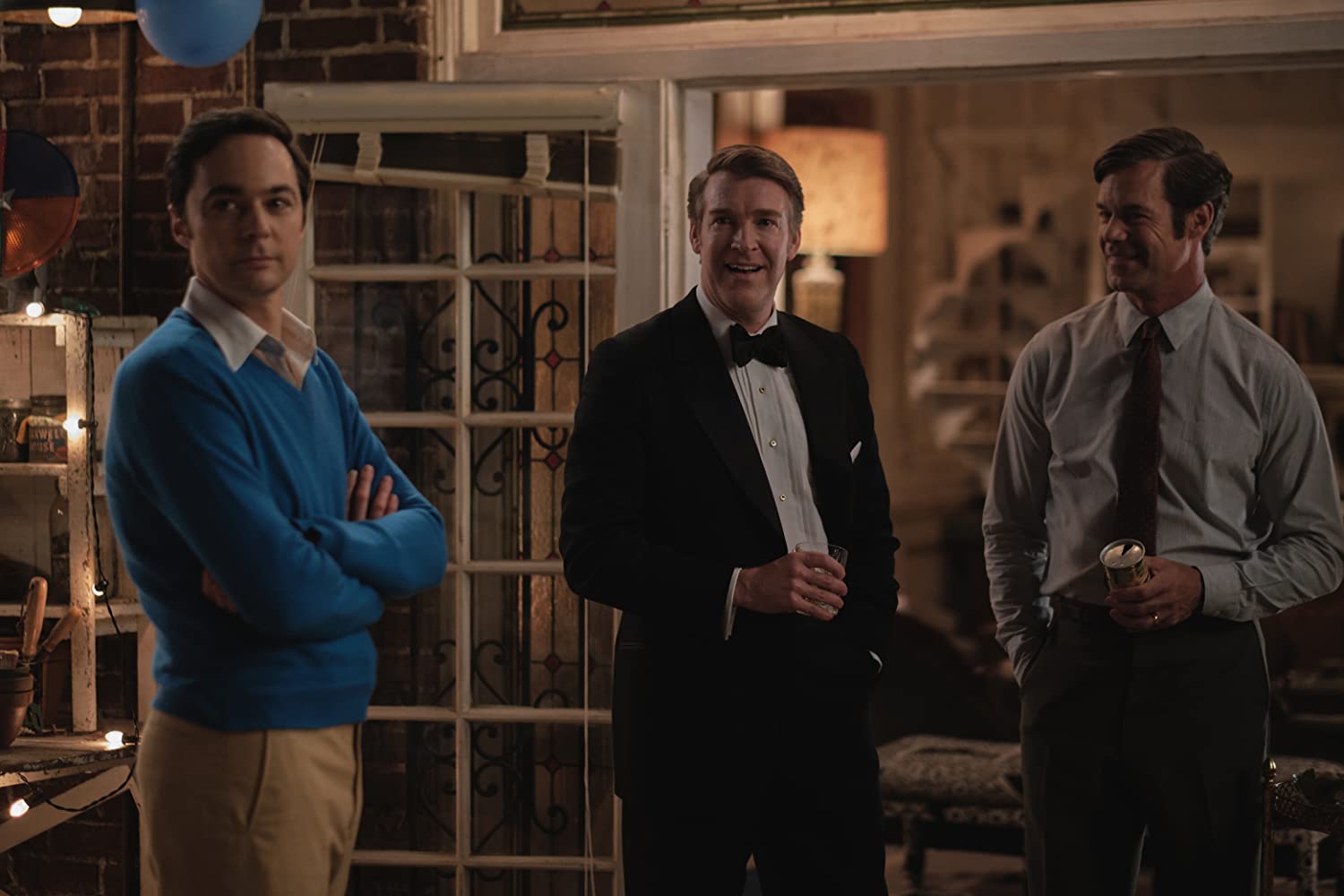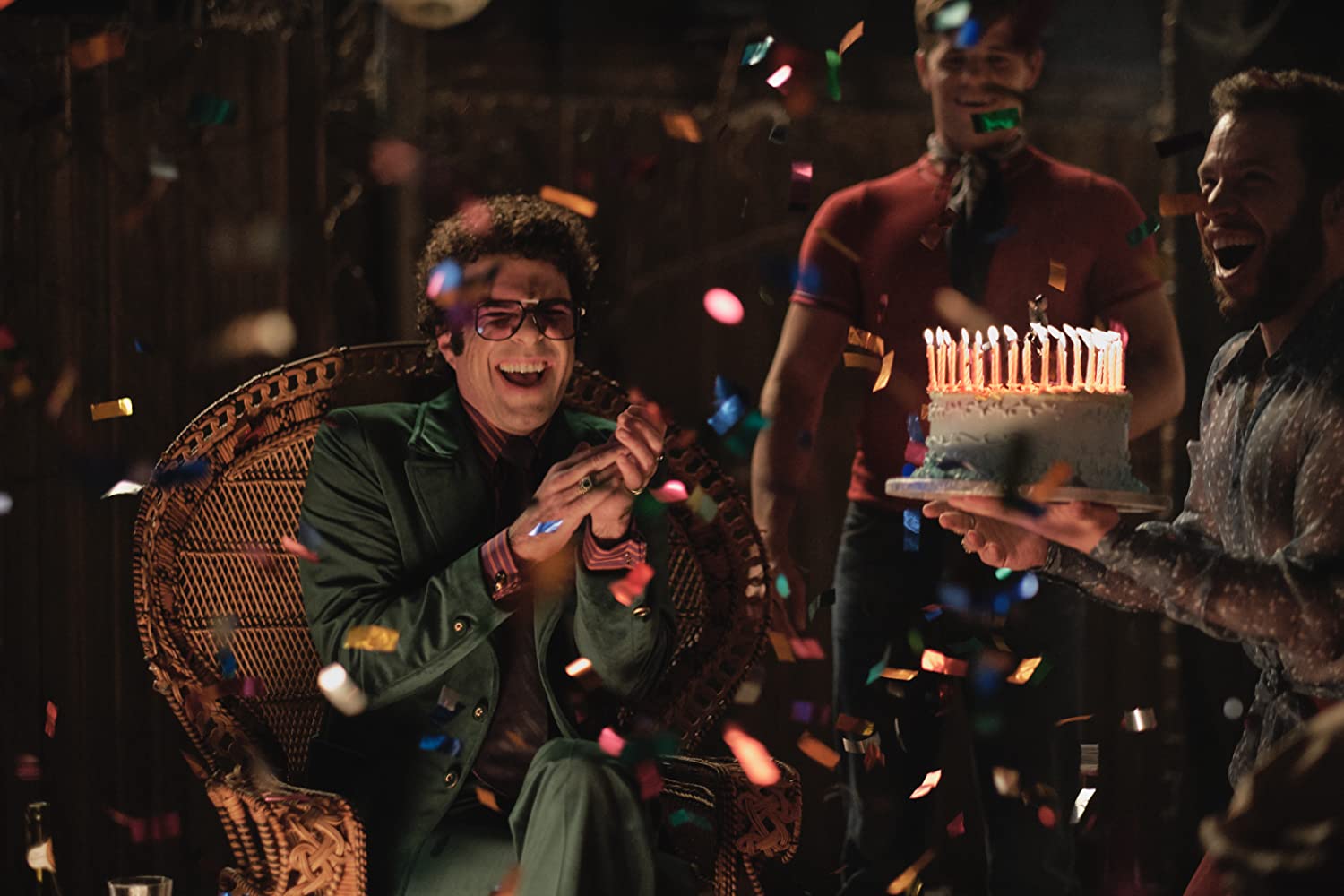By Lauryn Clarke, Third Year, History
Based on the 1968 play by Mart Crowley, this film shows a snapshot of life, love and longing in 1960s Manhattan, and how these feelings never truly fade.
The Boys in the Band (2020) is about a group of friends and a birthday party gone sour, all agreeing to telephone someone they have truly loved and admit it – a risky game under normal circumstances, but when considering the time period and that the friends are all gay, this rackets up the tension.

The choice of keeping the cast from the 2018 Broadway Revival of the play on which this show is based was an excellent one – having spent so much time with each other already, the actors knew how to fully embody and bring the characters to life on screen. Jim Parsons as Michael is a particular standout, a far cry from the role that most people know him for on ‘The Big Bang Theory’, he plays the protagonist with an echoing sense of guilt that plays out from start to finish. All of the main actors openly identifying as gay brings a level of intensity to the film in a way that highlights how personal and authentic these performances are, not just as the characters, but as part of a larger representation of the time. Taking into account the recent conversations on whether it is appropriate to be casting straight actors for gay characters, especially considering how much representation there is for queer characters as a whole, this was good and a change from Ryan Murphy who has been accused of doing this in the past.
All of the main actors openly identifying as gay brings a level of intensity to the film in a way that highlights how personal and authentic these performances are, not just as the characters, but as part of a larger representation of the time.
Director Joe Mantello manages to almost capture the same sense of claustrophobia that William Friedkin did with his 1970 film adaptation of the play, but his use of flashbacks, although helpful, breaks down the sense of tension before it can fully come to a peak. However, Mantello’s work on the stage with shows including Wicked and Angels in America has clearly come in handy (as well as his Tony for Best Revival of a Play with this cast in 2019), deftly adapting the play to screen in a way that would not suggest it was made for any other medium. The costume design was fantastic, fully embodying an external representation of each of the characters, and equally the cinematography by Bill Pope was excellent, making the camera feel almost like another guest at the party.

‘Show me a happy homosexual and I’ll show you a gay corpse’ – Michael’s line succinctly describes not only the character’s outlook on his life at the time in 1968, but the outlook of many people at the LGBTQ+ community at large at the time when the film takes place. Following the themes of loss and longing and ‘what if?’, the question that it kept coming back to after the film was over was ‘what if things were different then?’ – this film is set pre-Stonewall, pre pride marches, pre equal marriage and I couldn’t help wishing as a queer person myself that these characters could catch a glimpse of just how far things have come.
A Tale of Two Cities: How Pride (2014) is relevant today more than ever
Featured: Scott Everett White / 2020 Netflix, Inc.
What did you think of The Boys in the Band? Let us know!








